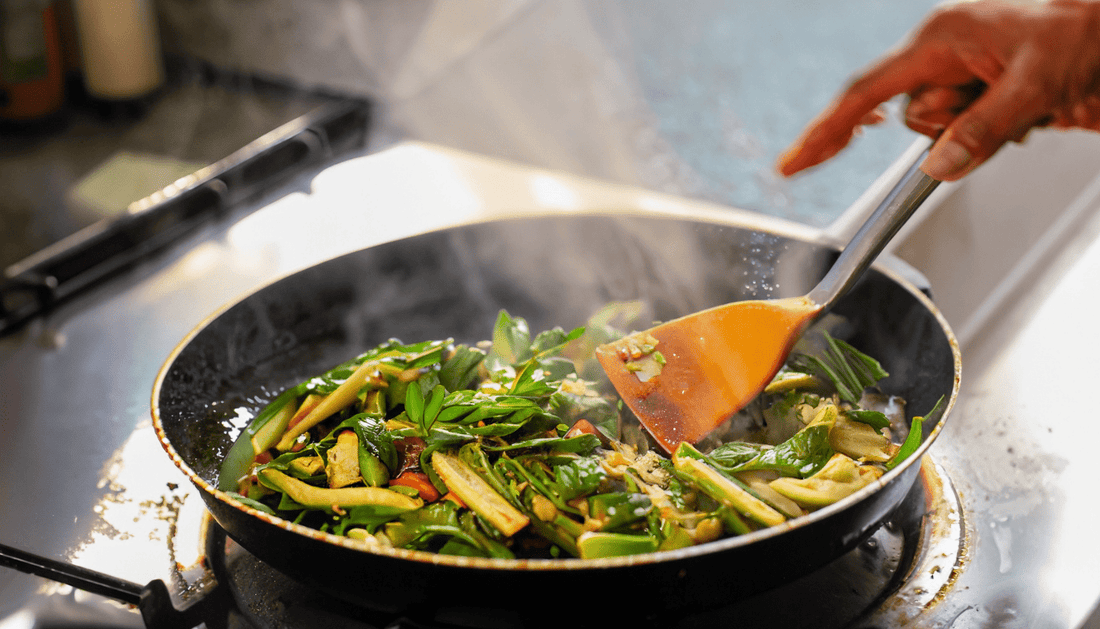Sawi vegetable, also known as Chinese flowering cabbage, chye sim, or choy sum, is a leafy green vegetable that is packed with nutrients and is widely used in Asian cuisine. It has a mild and slightly sweet flavor that makes it a versatile ingredient in many dishes. Whether you are a seasoned cook or a beginner, learning how to cook sawi vegetable can bring a new dimension to your meals. In this article, we will guide you through the steps of preparing and cooking sawi vegetable that will not only nourish your body but also feed your soul.
Benefits of Eating Sawi Vegetable
Before diving into the cooking process, let's talk about the benefits of eating sawi vegetable. This leafy green is a rich source of vitamins A, C, and K, which play a vital role in maintaining healthy skin, vision, and bone health. It is also loaded with antioxidants that help in reducing the risk of chronic diseases such as heart disease, cancer, and diabetes.
Additionally, sawi vegetable is a low-calorie vegetable, making it an excellent choice for people who are trying to maintain a healthy weight. It is also a good source of fiber that aids in digestion and promotes satiety.
On top of all that, sawi vegetable contains compounds known as glucosinolates, which have been shown to have anti-cancer properties and help reduce inflammation.
Choosing and Preparing Sawi Vegetable

The first step in cooking sawi vegetable is selecting the right ones. When choosing sawi vegetable, look for firm leaves that are not wilted or yellowing. The leaves should be a bright green color and free from any spots or blemishes.
Once you have chosen your sawi vegetable, it's time to prepare it for cooking. Rinse it thoroughly under running water and pat it dry with a paper towel. Remove the tough stem at the bottom of the leaves and discard it. Cut the sawi vegetable into bite-sized pieces, and you're ready to start cooking.
Stir-frying Sawi Vegetable
Stir-frying is one of the most popular ways to cook sawi vegetable. To stir-fry sawi vegetable, heat a tablespoon of oil in a wok or frying pan over high heat. Add the chopped sawi vegetable and stir-fry for 2-3 minutes, or until the leaves have wilted and the stems are tender-crisp. You can season the sawi vegetable with soy sauce, garlic, ginger, or any other desired seasonings.
Boiling Sawi Vegetable
Boiling is another great way to cook sawi vegetable, especially if you want to use it in soups or stews. To boil sawi vegetable, bring a pot of water to a boil and add the chopped sawi vegetable. Boil for 2-3 minutes, or until the leaves have wilted and the stems are tender. Drain the sawi vegetable and season with salt, pepper, or any desired seasonings.
Grilling Sawi Vegetable
Grilling is a great way to add a smoky flavor to sawi vegetable. To grill sawi vegetable, brush the leaves and stems with oil and place them on a grill over medium heat. Grill for 2-3 minutes on each side, or until the leaves are wilted.
Tips for Cooking Sawi Vegetable
- Do not overcook sawi vegetable, as it can become mushy and lose its nutrients.
- When stir-frying sawi vegetable, use high heat and cook it quickly to retain its crunchiness.
- To add a smoky flavor to sawi vegetable, grill it over charcoal or wood chips.
- Sawi vegetable can be eaten raw in salads or used as a garnish.
- Add a splash of water if the pan gets too dry while stir-frying.
- Experiment with different seasonings such as oyster sauce, sesame oil, and chili flakes to give your sawi vegetable a different flavor profile.
Conclusion
Sawi vegetable is a versatile and nutritious vegetable that can be cooked in a variety of ways, from stir-frying to boiling, grilling, and baking. It is rich in vitamins, minerals, and antioxidants and has been shown to have anti-inflammatory and anti-cancer properties. By following the tips and tricks outlined in this article, you can create delicious and healthy sawi vegetable dishes that your whole family will love.

FAQs
-
What other dishes can I make with sawi vegetables?
-
Can I freeze sawi vegetables?
Yes, you can freeze sawi vegetables, but it may lose some of its texture and flavor. To freeze sawi vegetable, blanch it in boiling water for 1-2 minutes, then plunge it into ice water to stop the cooking process. Drain and pat dry, then place in a freezer-safe bag or container and freeze for up to 6 months.
However, the texture may change after freezing, so using it in cooked dishes rather than raw salads is best.
3. Is sawi vegetable easy to grow?
Yes, sawi vegetable is easy to grow and can be grown in containers or in the ground. It prefers cool weather and requires regular watering.
4. What are some health benefits of sawi vegetables?
Sawi vegetable is a rich source of vitamins and antioxidants that help in reducing the risk of chronic diseases such as heart disease, cancer, and diabetes. It is also a low-calorie vegetable that aids in weight management and promotes digestion.
5. How can I make sawi vegetables taste better?
Experiment with different seasonings and cooking techniques such as stir-frying, steaming, and boiling. You can also pair sawi vegetables with other flavorful ingredients such as garlic, ginger, soy sauce, and chili flakes.
6. How long does sawi vegetable last in the refrigerator?
Sawi vegetables can last up to 5 days in the refrigerator when stored in a plastic bag or airtight container.
Incorporating sawi vegetables into your diet can not only nourish your body but also feed your soul. This versatile and nutritious vegetable can be cooked in a variety of ways and can add a unique flavor and texture to your meals. So, go ahead and give it a try!

